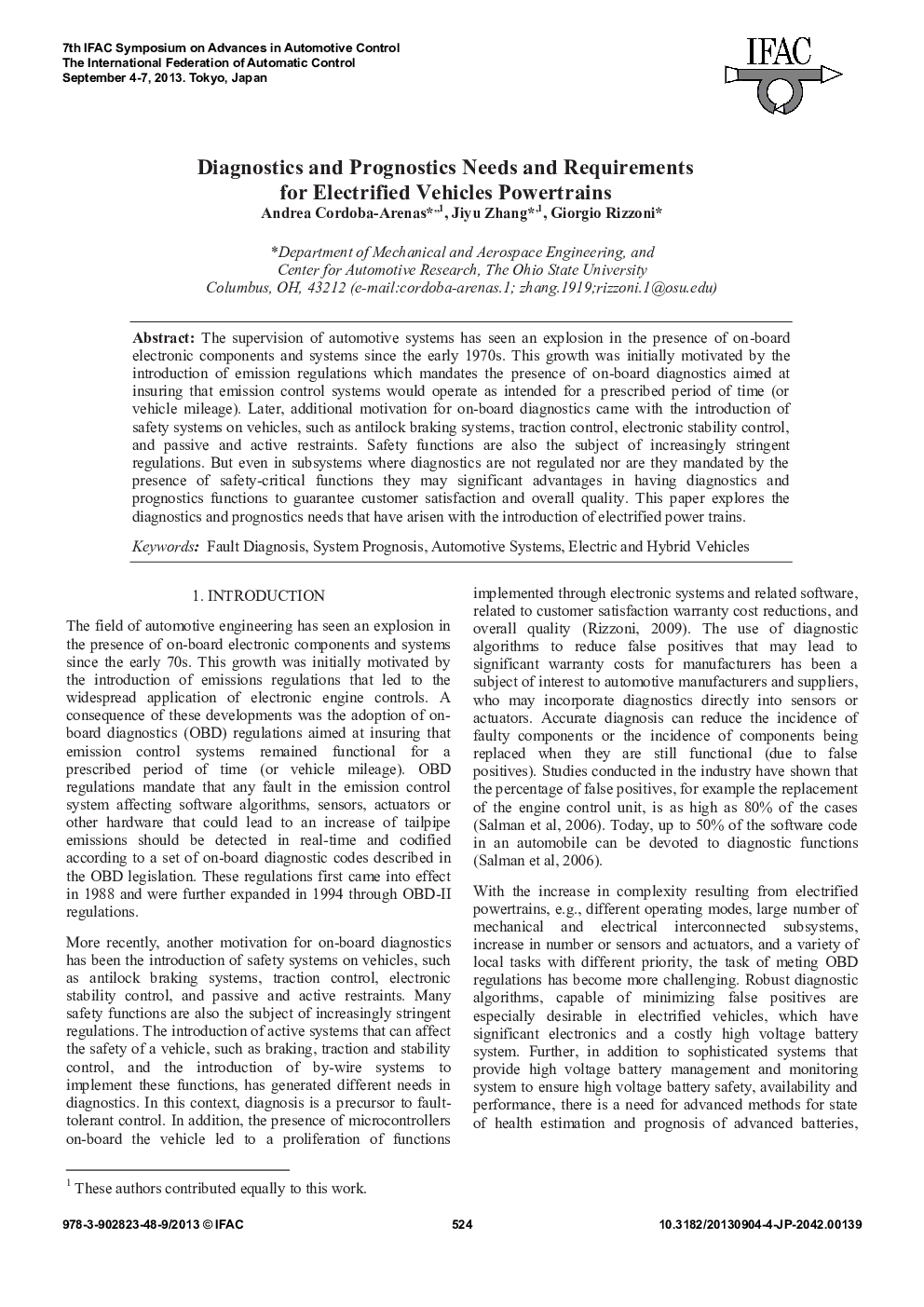| Article ID | Journal | Published Year | Pages | File Type |
|---|---|---|---|---|
| 715631 | IFAC Proceedings Volumes | 2013 | 6 Pages |
The supervision of automotive systems has seen an explosion in the presence of on-board electronic components and systems since the early 1970s. This growth was initially motivated by the introduction of emission regulations which mandates the presence of on-board diagnostics aimed at insuring that emission control systems would operate as intended for a prescribed period of time (or vehicle mileage). Later, additional motivation for on-board diagnostics came with the introduction of safety systems on vehicles, such as antilock braking systems, traction control, electronic stability control, and passive and active restraints. Safety functions are also the subject of increasingly stringent regulations. But even in subsystems where diagnostics are not regulated nor are they mandated by the presence of safety-critical functions they may significant advantages in having diagnostics and prognostics functions to guarantee customer satisfaction and overall quality. This paper explores the diagnostics and prognostics needs that have arisen with the introduction of electrified power trains.
